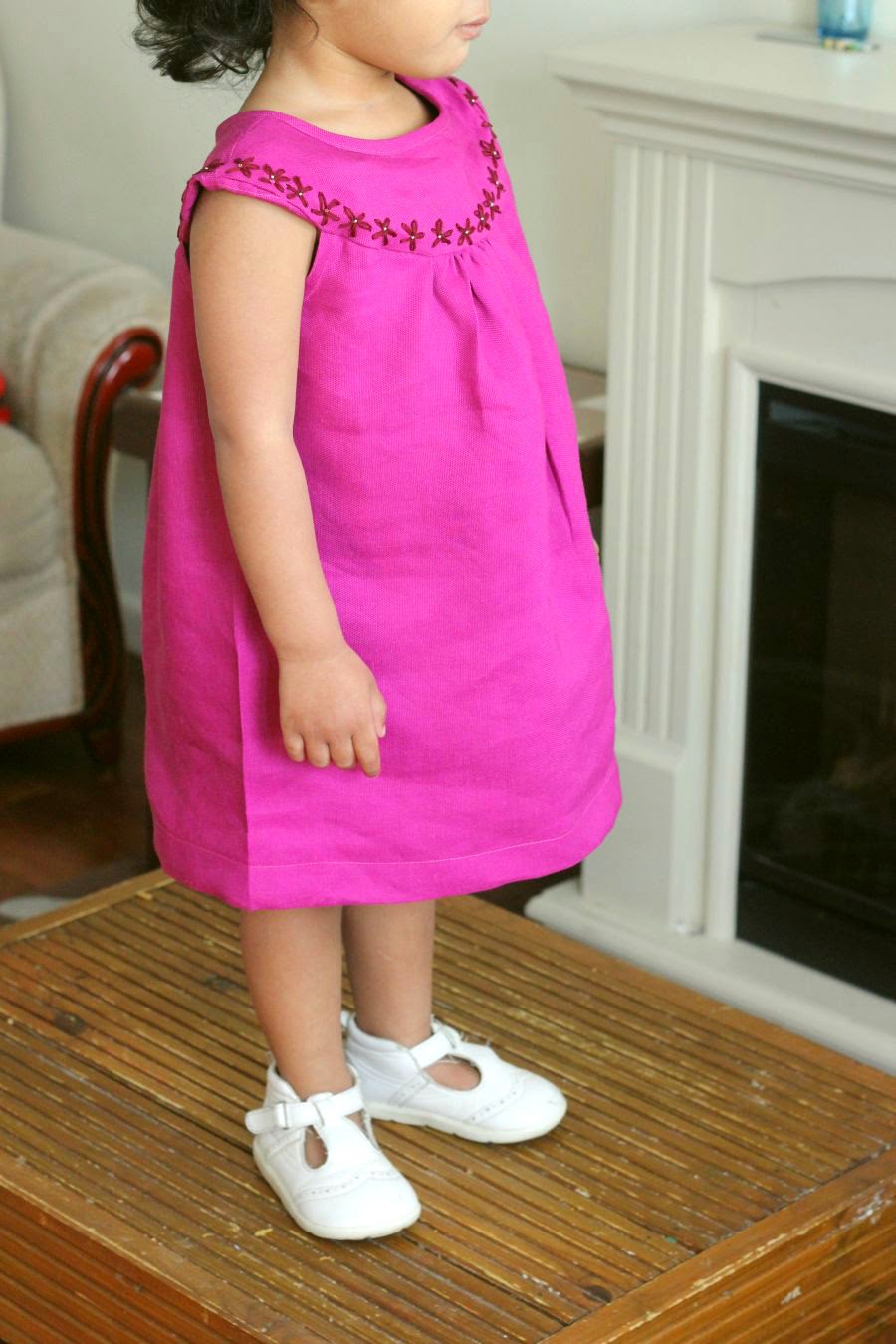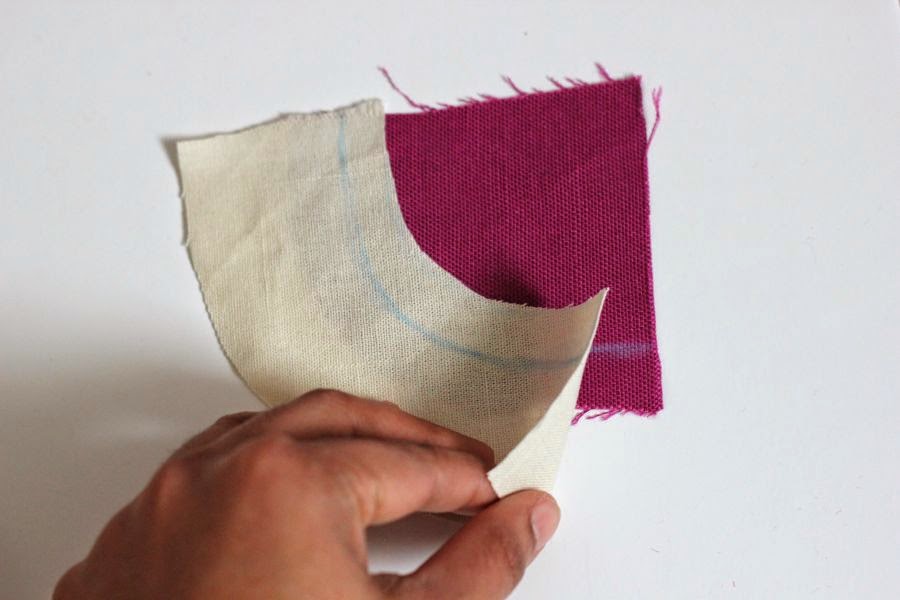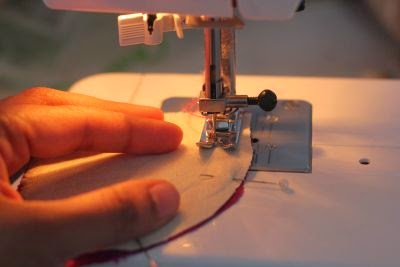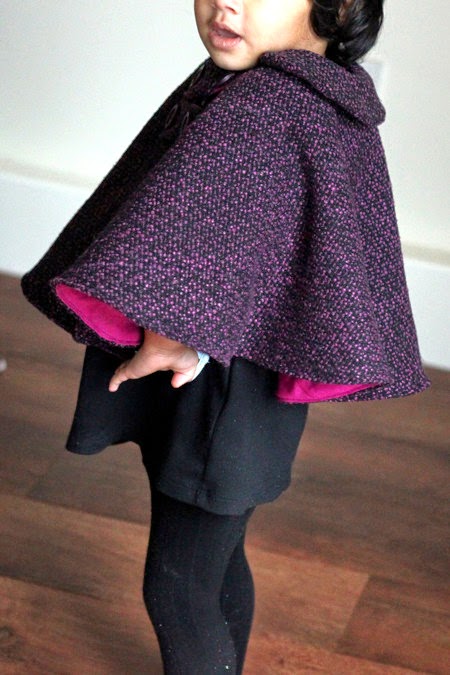Ever wondered why your garment is pulling in odd places or why it is getting all bunched up? It probably must be that you haven't clipped or notched rightly at the curves.
I've explained below convex, concave - when to clip and notch. It is a long post so grab a cuppa and enjoy!!
Jump to Section:
1. How to sew a curve
2. Sew concave to convex
3. Sew concave seams
4. Sew convex seams
A curve could essentially be of 2 types - Concave OR Convex:
CONCAVE - The front of your spoon which goes towards the inside to hold the food. Have a look and you'll see yourself upside down. I remember learning about this at school :). Do you?
Think of it like a valley.
CONVEX: The back of the spoon which is like a hill.
Sewing curved seams takes some practise but very importantly there are techniques to follow - and this is what I'm going to show you today:
- I use my left hand to glide and right hand (not shown as I used it to click) to remove pins and precision the glide of the left hand.
- I go really slow
- When the curve seems really difficult to manage I put the needle down
pivot to the angle I need making sure there are no sharp corners and continue to sew.
I've explained below convex, concave - when to clip and notch. It is a long post so grab a cuppa and enjoy!!
Jump to Section:
1. How to sew a curve
2. Sew concave to convex
3. Sew concave seams
4. Sew convex seams
A curve could essentially be of 2 types - Concave OR Convex:
CONCAVE - The front of your spoon which goes towards the inside to hold the food. Have a look and you'll see yourself upside down. I remember learning about this at school :). Do you?
Think of it like a valley.
CONVEX: The back of the spoon which is like a hill.
Sewing curved seams takes some practise but very importantly there are techniques to follow - and this is what I'm going to show you today:
How to sew a curved edge
- I use my left hand to glide and right hand (not shown as I used it to click) to remove pins and precision the glide of the left hand.
- I go really slow
- When the curve seems really difficult to manage I put the needle down
pivot to the angle I need making sure there are no sharp corners and continue to sew.
Examples: Yoke (convex) attached to the body piece (concave).

|

|
This involves some thinking - Let's have a look at at the below pieces of concave and convex fabrics that we will be sewing together:

|

|
At first glance you may think that the purple convex fabric is much larger than the white concave fabric and that it can never be sewn together. Right?? Now look closely. The blue colour stitching line (not very visible after I've put some dashed lines, sorry) is 13 cm on both fabrics.
Overlap the 2 fabrics on the blue stiching line and you will see it fits perfectly. (right image)Now how to sew it??
I think of it this way: We want to the edge length to be same as the stitching length.
Concave - The edge (11 cm) is smaller than the stitching line (13 cm). How to make the edge same as the stiching line? Cut/slit it so they can spread.
Convex - The edge (15 cm) is longer than the stitching line (13 cm). How to make the edge same as the stiching line? Notch it up so they can overlap.
Don't want to think too much? Ok, Remember this:
CONCAVE = VALLEY = SLIT = SPREAD
CONVEX = HILL = NOTCH = OVERLAP
Steps to sew:I'm notching up the convex here but you could slit the concave - Just do one of them or its just too hard to make sure you sew it correctly.
1. Stay stitch (just normal stitch) on the stitching line (I prefer to do it about 0.1 or 0.2 cm away from stitching line towards the edge). Next cut notches about 3 cm away to start with. The interval depends on the how deep the curve is. I generally start with 3 cm and cut more if required.
Note that the notches reach the stitching line but not cut through it.
2. Start to pin the convex to concave at the stitching line (blue here).
3. Don't worry!! It will get bunched up because we haven't yet cut the concave piece.
4. Sew at the stitching line with the convex piece on top being very careful there are not have any puckers on the concave piece.
5. Grrrr!! Got a slight one there. I cannot be bothered to unpick and do it again for this little one. I'm sure I can fix this.
6. This is how it looks on inside. Still all curled up.
7. Now cut the concave being careful not to cut through the stitch.
8. Trim the seam. I trim to about 0.7 cm.
9. That little pucker shows up here!!
10. Nothing that a hot iron can't fix!!
How to sew 2 convex curves
Example: Bottom curve of the most complemented cape coat
Remember -
CONVEX = HILL = NOTCH = OVERLAP
1. Sew on the stitching line with right sides together
2. Cut triangular notches on one of the fabric pieces.
3. On the reverse cut notches in between the notches of the white fabric.
This way:
1. When you iron the fabric it will not sink inside of the triangles.
2. If it is sheer fabric you will not be able to see the triangles from outside. (If it is very sheer you'll still be though!)
4. Another pic for clarity!!
5. Trim the seam allowance to about 0.7 cm
6. At this point I turn the fabric on right side and see if the fabric still overlapping after the notches. It is here so I create more notches.
7. Closer notches this time!!
8. The inside this time doesn't seem to overlap, I'm happy!
That's it!! Neat.
How to sew 2 concave curves
CONCAVE = VALLEY = SLIT = SPREAD
I'll post example soon. I've made a kurta for my daughter and I'll post the neck which is to attach 2 concave pieces.
2. Sew at the stitching line
3. Now clip/cut/slit one of the fabric pieces and then turn and clip/cut/slit in between the intervals on the other fabric piece just like we did for the convex pieces.
4. Trim to 0.7 cm seam.
5. Turn right side lightly press with hand.
6. Have a look on the inside if they need to spread more. I'm happy here.
That's it!! Give it a good press.
Let me know if this was helpful.




































Very helpful indeed! Thanks for sharing these tips!
ReplyDeleteThanks so much! glad you found it helpful.
ReplyDeleteExcellent tutorial. Great pics especially the Clarity pic for the 2 convex curves! I thought I knew what you meant but the picture proved it.
ReplyDeleteThank you! Happy you found it helpful. It has been really easy after I have understood the why's of clipping and notching.
DeleteThis is perfect! :) What a great explanation - will be pinning! I often forget which one to clip and which curve to notch.
ReplyDeleteThanks Deanna. I'd been thinking about it for a week to get it right in my head. It is so easy now. :)
DeleteHi Preethi
ReplyDeletethanks for clearing i thought clip n notch to be one n same u clarified this beautifully with ur this blog thanks a ton